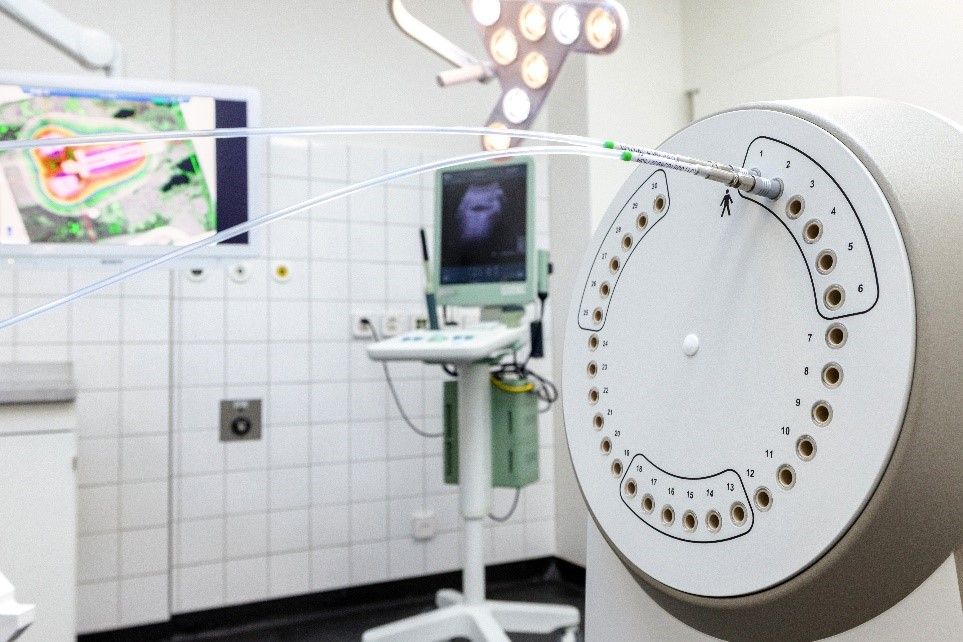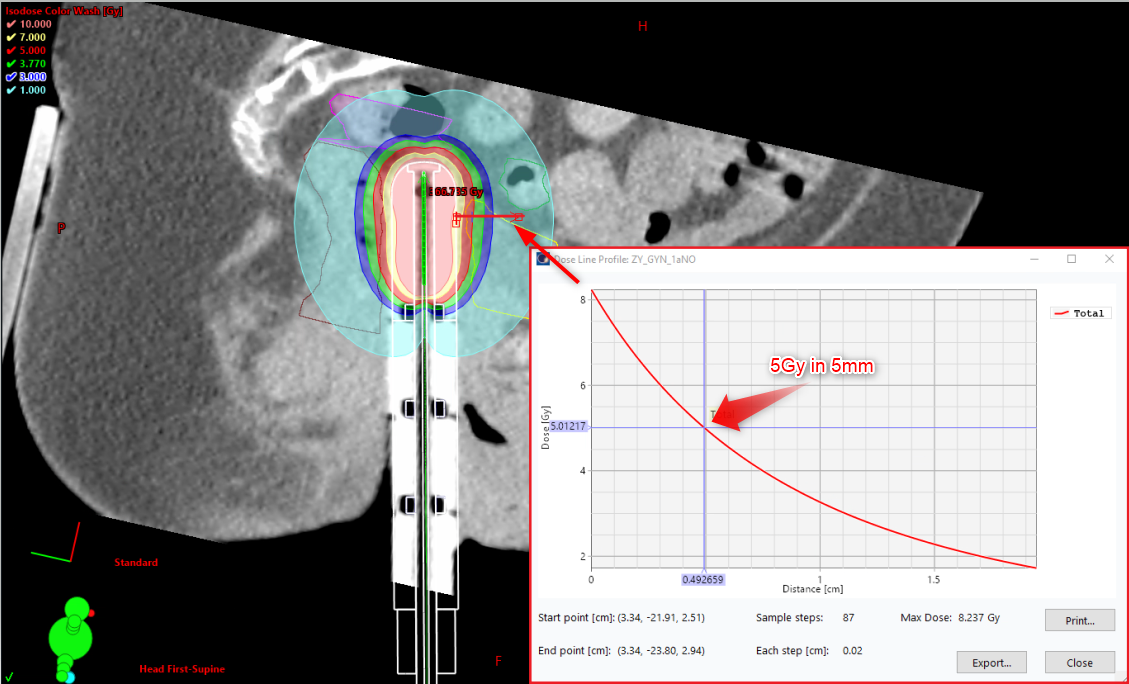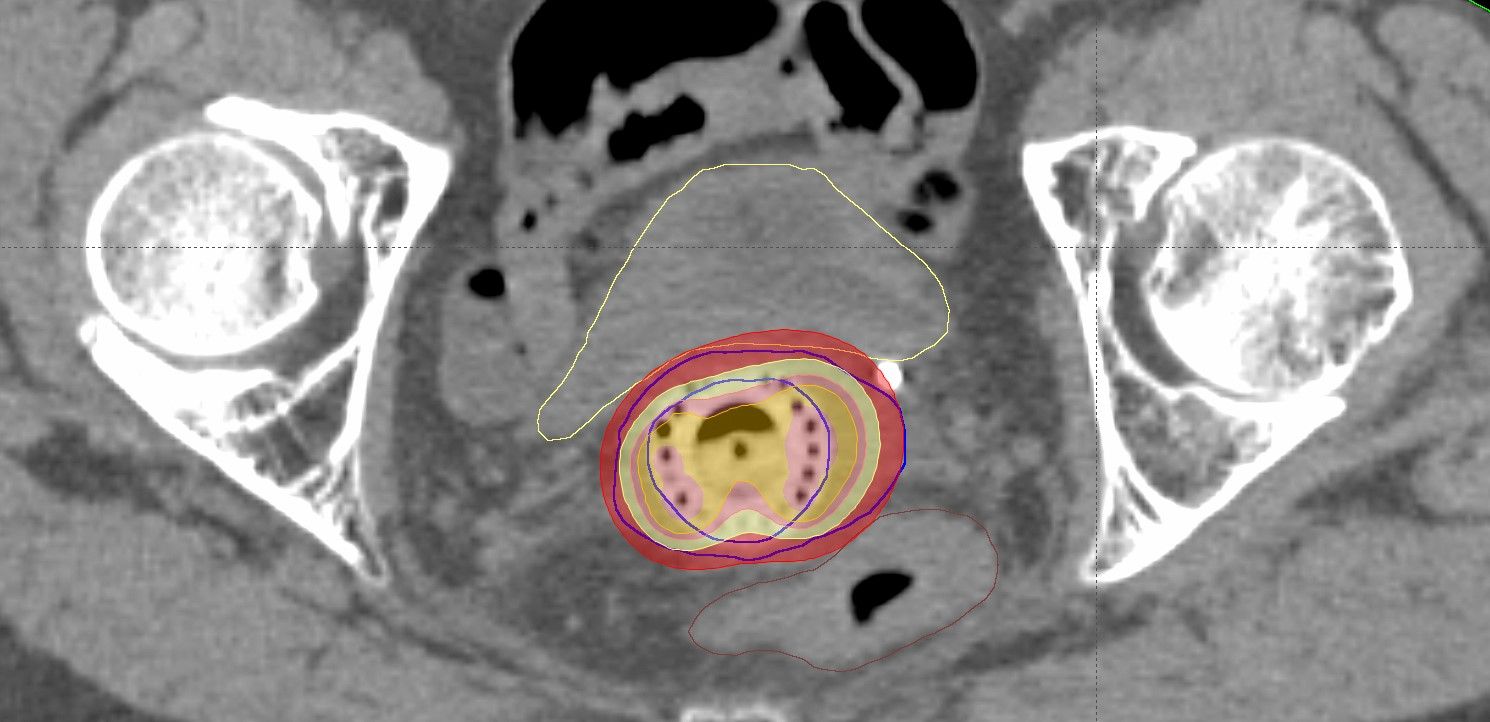The radiation sources are characterized by a steep drop in dose. Due to these physical properties, a high dose can be applied to the target area, with hardly any dose being delivered to the surrounding tissue a few millimeters away. This method therefore provides the best possible protection for organs at risk and healthy tissue. Brachytherapy is often used as a supplement to classic radiotherapy/teletherapy. In addition to intracavitary and interstitial applications, superficial treatments can also be carried out

Figure 1: Remote-controlled afterloader (Varian BRAVOS) with two exit tubes and an ultrasound device in the background for checking the position of hollow needles in the patient.
A new afterloader (Varian BRAVOS) with up to 30 usable extension tubes has been in use at our clinic since April 2021. To ensure that the therapy source is positioned with millimeter precision, the source positions are checked in a length verification measuring device before each treatment and corrected if necessary.
The steep dose gradient is crucial for optimal tumor control with maximum protection of the organs at risk (Figure 2). Here you can see a representative standard plan with a cylinder applicator, which delivers a dose of 5Gy at a depth of 5mm and at the same time spares the bladder, rectum, intestine and part of the large intestine (sigmoid colon).

Figure 2: A cross-section of a cylinder applicator divided into sections. The organs at risk are also shown, namely the bladder (yellow), the rectum (brown), the sigmoid colon (pink) and the bowel (green). The diagram shows the steep drop in radiation dose from the surface of the applicator towards the bladder.
The holding positions (green) of the therapy source are shown in the center of the applicator. A computer-controlled planning system is used to optimize the holding times at the individual positions in order to achieve a homogeneous dose distribution on the surface of the applicator and coverage of the target volume. A dose profile shows the steep drop in dose from the applicator surface to the tissue.
More complex target volumes are planned and irradiated on a patient-specific basis by combining different applicators and hollow needles. The target volume definition is generally based on current MR imaging. You can see an example of a more complex treatment in Figure 3, in which an asymmetrical tumor volume is well covered and the bladder and rectum are optimally protected.

Figure 3: Complex treatment of an irregularly shaped target area. Hollow needles are placed around the cylinder applicator (as shown in the cross-section). This enables targeted protection of the rectum (brown) and the bladder (yellow).
Security and security concept
Brachytherapy is a special radiation therapy that delivers a highly radioactive closed iridium-192 source to applicators and/or hollow needles via transfer tubes. Such a source of therapy must be protected and secured in the best possible way by certain measures required by the FOPH. A new safety and security concept was developed for this purpose. Details can be found in this European SocieTy for Radiotherapy and Oncology (ESTRO)article.

